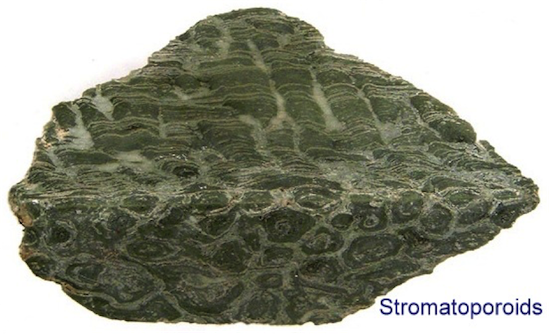
Stromatoporidea Notes

Stromatoporoidea is a class of aquatic invertebrates common in the fossil record from the Ordovician through the Devonian. They were especially abundant in the Silurian and Devonian Periods. These invertebrates were important reef-formers throughout the Palaeozoic and the Late Mesozoic Eras. The group was previously thought to be related to the corals and placed in the Phylum Cnidaria. They are now classified in the sponges (Phylum Porifera), specifically the sclerosponges. There are numerous fossil forms with spherical, branching or encrusting skeletons of laminated calcite with vertical pillars between the laminae.
The oldest stromatoporoids are part of the events in later Earth history when skeletonised fossils became abundant. The earliest stromatoporoids are thought to have originated during the late Cambrian Period, but much depends on the interpretation of the nature of fossil structures that are not found as modern organisms. Definite stromatoporoids became abundant in the middle part of the Ordovician Period, around 470 million years ago, and were the major reef-building fossils in the Palaeozoic Era. Stromatoporoids suffered extinction along with other fossils in the Late Devonian mass extinction event.
Stromatoporoids are useful markers whose form and occurrence can diagnose the depositional environment of sedimentary strata. Palaeozoic stromatoporoids hosted various symbiotic endobionts such as rugosans, syringoporids, worms and cornulitids.